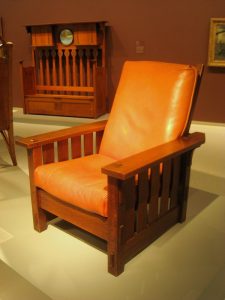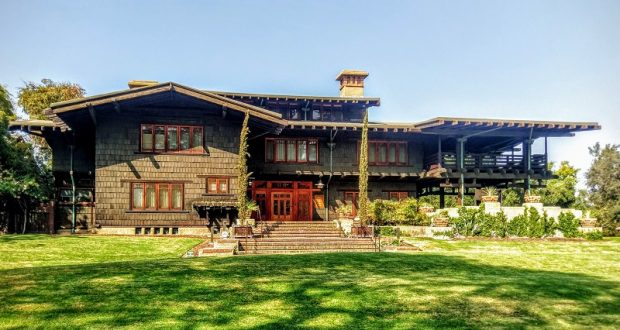Use of the best materials, simple forms and, above all, traditional craftsmanship: these were the values advocated throughout the international Arts and Crafts movement. Originating in England during the late 1860s, this “anti-industrial” revolution spread quickly through Europe and then America.

First instigated by an artist/writer named William Morris (1834-1896) and an art critic/poet named John Ruskin (1819-1900), the movement continued its influence all the way through the late 1920s. The writings of these two men were in reaction to what was considered as, “the very poor state of the decorative arts.”
Here in America the Arts and Crafts movement took on a life of its own. As in England, sentiment had changed regarding industrialization and poorly made goods. Known in this country as the Craftsman Style, the movement prevailed — beginning about 1902 — with the help of such greats as Frank Lloyd Wright in the midwest, Julia Morgan of Hearst Castle fame and the Green Brothers in Pasadena, CA.
The philosophy of these architects was simple: a comprehensive design includes not only the building but also the interior, the landscape, and the furnishings. (Pictured) In this way, craftspeople of all disciplines join together in cooperation to create a complete work of art.
Follow this link to the website for the Gamble House designed by Green and Green in 1908 — it’s now a National Historic Monument.
And here’s a short video about the house:
 Where furnishings are concerned, the Stickley brothers were the premiere champions of the Craftsman Style.
Where furnishings are concerned, the Stickley brothers were the premiere champions of the Craftsman Style.
In 1901 Gustav, the eldest brother, founded a magazine called “The Craftsman” which was the voice of the Arts and Crafts movement here in America — hence, the name Craftsman Style was born. In 1907 the brothers work was hailed as the furniture of the American ideal: simple, sturdy, functional and made of natural materials.
Rejecting ornamentation and valuing craftsmanship, their designs were based on rectilinear forms. Certain construction features, such as Mortise & Tenon and dovetail joints, doubled as decoration. The ironic thing is that Gustav was put out of business in later years by a resurgence of industrialists who mass-produced renditions of his designs.
 Some of the other Crafts that enjoyed a renaissance as a result of this movement include: stained and blown glass, pottery, ironwork, ceramic tile and upholstery. Toward the end of the movement emphasis on artist/craftsman originality eventually evolved into the design concepts of the 1930s Art Deco movement.
Some of the other Crafts that enjoyed a renaissance as a result of this movement include: stained and blown glass, pottery, ironwork, ceramic tile and upholstery. Toward the end of the movement emphasis on artist/craftsman originality eventually evolved into the design concepts of the 1930s Art Deco movement.




